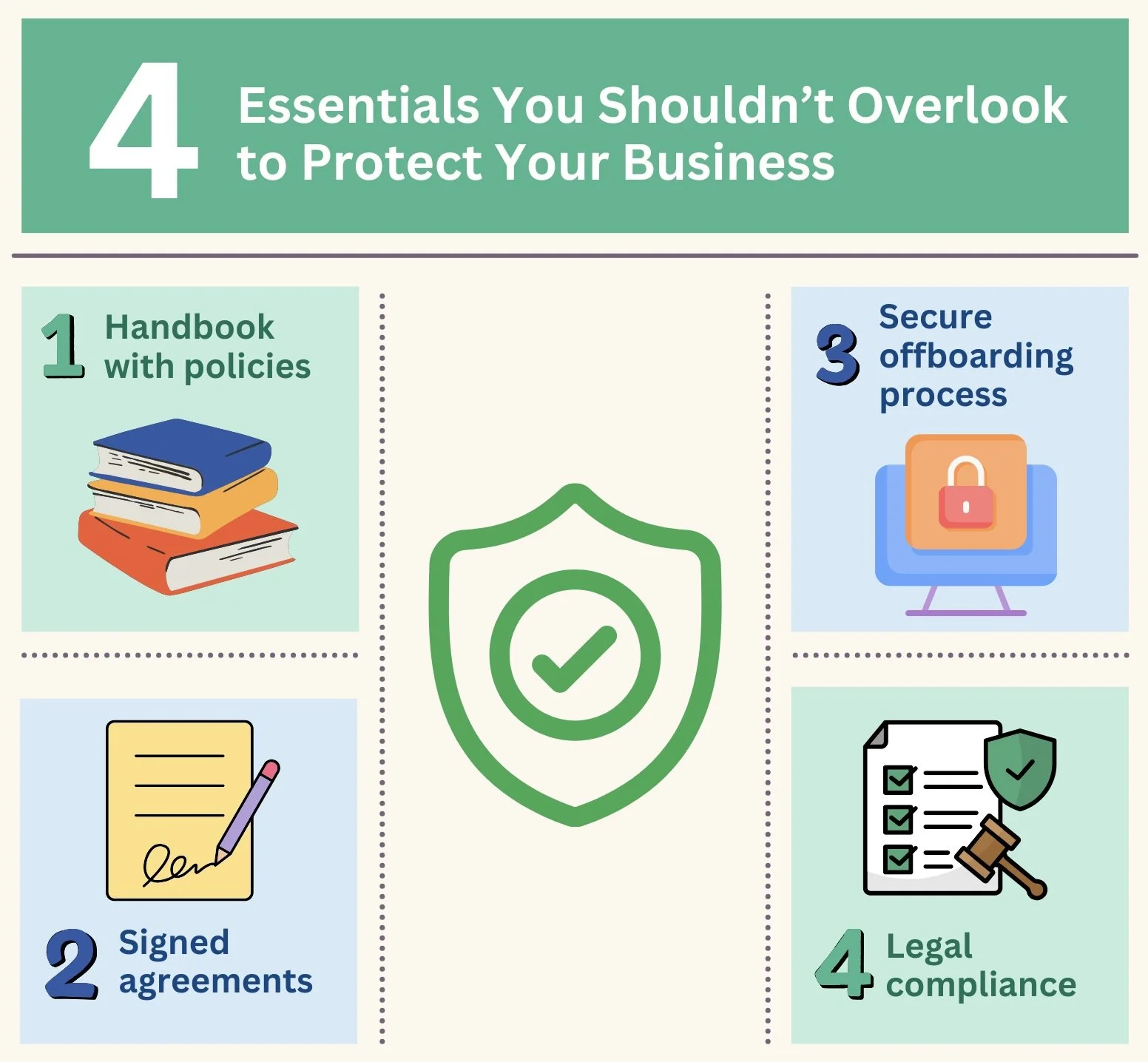Hiring and Firing Employees: Best Practices
“Move fast and break things” may be a catchy saying for innovation practices, but it doesn’t work as well in an employment law context. A better approach is “hire and fire efficiently, and document your process.”
Documentation is a key element in growing your business, and can help mitigate issues down the line for your company. It is advisable to set forth clear policies in a written handbook that includes anti-discrimination policies, leave policies, and procedures for reporting and investigating complaints of harassment or discrimination.
4 Essentials You Shouldn’t Overlook to Protect Your Business
Best practices for hiring
Ensure that job descriptions are up-to-date and match the scope of the role.
Clearly list any requirements for the role (such as hours of availability, travel, in-person office presence, etc).
Make sure any postings clearly state whether you are hiring an employee, or seeking an independent contractor for a specific project (see more information about the importance of classification here: Contractor vs. Employee: Startup Risks of Misclassification — David Fryman P.C.)
Ensure that postings comply with applicable state and local labor laws. For example, in New York, businesses with more than 4 employees are required to provide compensation ranges for posted positions.
For interview questions, don’t ask about topics that touch on potential discrimination issues. For example, don’t ask about an applicant’s religion or family background.
In an ideal world, every new hire would be a great fit and remain with the company for many years. But, when it is necessary to part ways with an employee, it is important to ensure your business is protected from possible discrimination or other unlawful termination claims.
Best practices for firing
Keep copies of employee evaluations and any disciplinary records or performance improvement plans.
Document any issues with employee performance in real time – don’t wait until you decide to let someone go. Keep records of issues as they arise. For example, if any employee isn’t meeting objectives from a job description, meet with the employee to let them know, then keep notes from the meeting and follow up via email and with employee evaluations raising the issue.
Clearly document the termination decision in writing. Consider consulting counsel on a severance agreement for the employee to ensure that the employee’s possible claims are waived to the extent permitted by federal, state, and local law. Include provisions stating any ongoing confidentiality obligations to protect your IP.
Make sure that IT and security procedures are in place to remove employee access upon termination. Particularly in the case of remote employees, make sure that there are clear policies in place for timely return of company equipment, and that any former employees no longer have access to company systems.
Firing Best Practices: Step-by-Step
If you have specific questions about your hiring and firing practices, let’s connect and ensure your business is protected.


